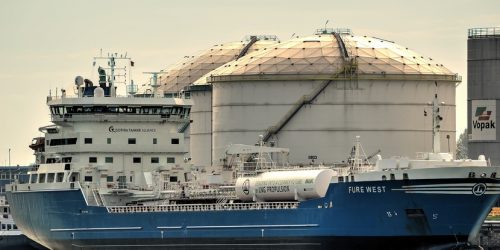In April 2017, Qatar lifted what had been a 12-year moratorium on further development of its vast offshore North Field. Three years later, Qatar is steamrolling forward with the largest LNG expansion the industry has ever seen. If it so desired, Qatar could fund and construct seemingly unending expansions to its already massive, 77 million mt/year, 14-train liquefaction operation. Qatar Petroleum (QP) has effectively said as much, upping its expansion plans twice since 2017. First there was the 2017 North Field East (NFE) expansion, initially aiming to take Qatari LNG export capacity to 100 million mt/year, a target upped to 110 million mt/year shortly thereafter in 2018.
As if the NFE expansion wasn’t enough, there was then the third announcement, the North Field South (NFS) expansion, which aimed to take Qatari LNG export capacity to 126 million mt/year. While this 126 million mt/year acts as a best case, not base case, scenario for medium-term Qatari export capacity, the message is the same: Qatar is unconcerned about cost-based competition in its determination to maintain a vice grip on global LNG markets. That said, even with the lowest production costs in the world, a geographically enviable location, and a deep balance sheet, the real question is not Qatar’s ability to build this capacity, but how it will find a home for the output.
Recent contracts with Air Products indicate QP’s NFE expansion will entail four 7.8 million mt/year mega-trains for which engineering, procurement and construction (EPC) contracts are expected to be finalized toward the end of 2020, a delay of roughly one year relative to the original timeline, which can be attributed to Covid-19. Despite the delay, site preparation and development of incremental natural gas production are already under way. QP aims for an ambitious 2025 start-up of the four trains. While part of the NFE expansion is likely to come online in that time horizon, S&P Global Platts Analytics expects the overall commissioning of the new facilities to mimic Qatar’s last major expansion between 2009 and 2010, implying all four NFE trains will not be simultaneously online before 2027. While QP has consistently reaffirmed its determination to build an incremental six – not four – trains, the additional two NFS mega-trains are not included in the ongoing EPC process. Platts Analytics continues to view this expansionary phase as likely, but not within the current medium-term outlook, instead making commercial progress no earlier than 2028, after which Platts Analytics research shows the global LNG supply-demand balance will incentivize incremental capacity buildout—of which Qatar is arguably the most competitive.
QP still faces the challenge of marketing this massive incremental volume. Unlike previous expansions, Qatar is moving forward without having NFE’s capacity underpinned by new long-term contracts, very similar to how it is proceeding with Golden Pass in the US. To be sure, this is not a trend isolated to QP. The precedent was set with LNG Canada in 2018, and more recently, in Senegal and Mauritania, where all the 2.5 million mt/year offtake from Greater Tortue LNG is destined for BP Trading’s portfolio. For Qatar, though, the task is mammoth, with QP facing over 50 million mt/year of uncontracted supply in the next six years, 31.2 million mt/year of new uncontracted capacity (not counting the 11 million mt/year of equity production from Golden Pass) and 23 million mt/year of expiring contracts, 60% of which are with Qatar’s traditional Asian customer base.
With the global LNG market seeing just 15 million mt/year of new end-user backed contracts signed in all of 2019, the challenge Qatar faces is mammoth even for LNG’s most powerful player. Much of the difficulty QP will face comes from Qatar’s comfort, and in some sense, dependence on long-term oil indexation. QP’s new volumes will need to be marketed against a growing field of portfolio supply, much of which will clear the market around spot LNG prices, best represented by the Platts JKM, which S&P Global Platts Analytics does not see breaching the $7/MMBtu mark (annualized, real 2019 USD) before the end of the decade. This sits well below the average price of $9/MMBtu QP has realized for its sales into Northeast Asia since 2016. Consequently, Qatar must now prepare itself for sales prices below what it is used to achieving, potentially highlighting the need for such a large capacity buildout.
Given the scale of the uncontracted capacity, Qatar will look to its yet-to-be identified project partners to market or, in the best case, consume some of this incremental output. This highlights the strong potential that QP will seek out an Asian regional energy player or end-user as a cornerstone partner, a strategy which could simultaneously deepen geo-economic ties with China. That said, Qatar is hedging its bets, expanding its European “put option” through the purchase of 100% of Zeebrugge’s regasification capacity and standing up its own in-house trading division, which will allow it to lean more heavily on active spot sales and optimization. Even with these efforts, increased contract flexibility will be essential if QP is to bring its proposed capacity into service with substantial long-term contractual coverage.





